 My top 10
Browse by author
Browse by category
The full list
Back to the bookshop front
page...
|
| The wine bookshop Reference works |
| Please note I haven't listed any
prices here. This is because the links will take you to the relevant entry in the
amazon.co.uk catalogue, which will give the up-to-date price (usually substantially
discounted): this may change at short notice. |
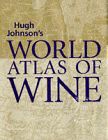 The World Atlas of Wine The World Atlas of Wine
Hugh Johnson
Hardcover - 320 pages ( 8 September, 1994)
Mitchell Beazley; ISBN: 1857322681
Reviews
www.wineanorak.com
The fourth edition of a classic, first published in 1971.
The book begins by giving some perspective, tracing the history of wine and following
through with chapters on the vine, designing a vineyard, terroir, grape varieties,
weather, making wine, wine tasting and serving wine. The rest (and great majority) of the
book is concerned with putting wine firmly in its geographical context, largely by means
of maps of all the main wine regions across the globe (and many of the minor ones too).
Superbly designed and conceived, nicely illustrated and beautifully written, it is hard to
overestimate how significant an achievement this book is. Hugh Johnson may have been
around for ever, but his writing comes across as intelligent and fresh, and his
perspective combines a respect for tradition with a balanced acceptance of modern trends
and developments. At his best when dealing with potentially controversial issues, he
always seems to give a fair and accurate precis of the issues involved. Although I've
classed this book as a reference work, it makes pleasurable browsing, and is another 'must
buy' for any self-respecting wine nut.
Synopsis
An introduction and companion to wine history, appreciation and identification. This
edition takes account of changes in the wine world. New and revised maps have been added
to the region-by-region gazetteer, artwork and illustrations have been replaced, and the
text has been rewritten.
Go to the
amazon.co.uk catalogue entry for this book
The Wine Atlas
Oz Clarke
Hardcover - 304 pages (12 October, 1995)
Little, Brown & Company; ISBN: 0316146978
Reviews
www.wineanorak.com
A cynic might accuse Oz Clarke and his publishers
Websters of blatantly ripping off Hugh Johnson's winning formula. This book follows
exactly the format of Johnson's classic 'World atlas of wine', with introductory chapters
leading through to an atlas-style survey of the world of wine. However, Websters have
given an intruiging twist to their Atlas, by producing a series of beautiful handpainted
panoramic vineyard maps of each of the major wine regions, which succeed in bringing to
life the various vineyard areas. In addition, Oz Clarke writes well in a lively style, and
the layout and accompanying photographs surpass even the high standards set by Johnson's
fourth edition. Hugh may have been here first, and both atlases are of a very high
standard, but if forced to choose between them, Oz Clarke wins by a whisker.
Harvey Steiman, Wine Spectator, 15 December 1995
'The most exciting worldwide collection of wine maps ever'
William Leith, Mail on Sunday, 17 December 1995
'Clarke has judged it just right... I've never read a wine book like it.'
Roger Voss, Wine Magazine, February 1996
'I admire the energy which comes from every page, the enormous feeling of discovery which
Clarke always generates, and which makes him such a fine advocate for wine.'
Book Description
Winner of the Julia Child/IACP Drink Reference award, Oz Clarke's Wine Atlas is
unique in its approach to the world of wine. It captures the beauty of the world's great
vineyard areas in more than 70 spectacular, handpainted panoramic maps.
Fundamental to the understanding of wine is a sense of place. Knowing which country,
which region, which hillside and even which vineyard a wine comes from adds enormously to
the pleasure of drinking it. Through its unique cartography and Oz Clarke's lively prose,
this revolutionary atlas illustrates and explains the vital connection between the land,
the winemaker and his wine and shows how different landscapes as well as the skills of the
winemaker contribute to the extraordinary range of flavours found in wine.
Synopsis
Fundamental to the understanding of wine is a sense of place. Knowing which country, which
region and which vineyard a wine is from adds enormously to the pleasure of drinking it.
This atlas shows where, why and how vines are grown and wines produced around the world,
mapping the major wine countries and putting the wine areas in a regional and global
context. It continues with thematic maps that highlight factors of soil, climate,
economics and society that determine patterns of wine production and consumption.
From the Author
The aim of this Atlas is simply to transport you right into the heart of the world's great
vineyard areas - something that no wine book has ever attempted before. This is achieved
by providing a grand aerial tour using breathtaking panoramic landscape maps.
Initially I wasn't sure I could face writing this huge book, but as soon as my
publisher showed me the prototype panoramic map of Chablis, I knew I had to. This is the
only wine book that puts you right in the vineyard - and that's where it all begins, in a
way what it's all about. And this instant conversion led to 300,000 words of passionate
description of the world of wine I love.
Go to the amazon.co.uk catalogue entry for this book
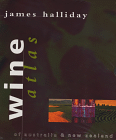 Wine Atlas of
Australia and New Zealand Wine Atlas of
Australia and New Zealand
James Halliday
Hardcover - 416 pages ( 4 March, 1999)
HarperCollins (Australia); ISBN: 0732264480
Review
www.wineanorak.com
Another atlas-format work, this time by the most
influential voice of the Australian wine scene, James Halliday. This time there is less
focus on the maps (which are rather simple), and more on the different producers (within
each region there is a review of the leading domaines). Nicely illustrated and a useful
resource for anyone planning a trip to antipodean wine country.
Synopsis
James Halliday has over 40 years of experience in the wine industry. This new edition
features special profiles on major industry trends and personalities and statistics for
all the major regions.
Buy this
book from amazon.co.uk
 Jancis
Robinson's Concise Wine Companion Jancis
Robinson's Concise Wine Companion
Jancis Robinson
Paperback - 640 pages (31 March, 2001)
Oxford University Press; ISBN: 0198662742
Review
www.wineanorak.com
Most wine geeks will be familiar with the Oxford Companion to Wine, the second
edition of which was released back in 1999. Along with Hugh Johnson's Wine
Atlas, this is one of the classic texts that should be on every wine lover's
bookshelf. Well, the concise wine companion has some 2350 of the entries from
the Oxford Companion included in its 559 pages, and from leafing through the
entries it's hard to see what's missing -- there are no noticeable omissions
(the preface mentions that only two subject areas -- distilled and fortified
wine -- that have been omitted or substantially cut). The cross-referenced
entries are well enough written, in a semi-formal, economical and precise
'lexicographer-speak' language to make casual browsing worthwhile. Maybe I'm an
unredeemable anorak, but I spent a happy couple of hours just reading from one
entry to another. So, if you already possess the Oxford Companion, should you
purchase this book? I'd say yes, for one key reason -- portability. You can fit
this book in your briefcase or find space for it on your desktop, whereas its
hardback predecessor is an unwieldy doorstop of a book. If you don't already
have a copy of the Oxford Companion, then the decision to buy this is a bit of a
no-brainer, especially when Amazon are retailing it for a penny less than £8.
Faults? Well, the cover design looks a bit 1970s: it is split vertically, with a
weakly smiling, slightly embarrassed-looking editor on one side and the
obligatory wine glass shot on the other. But we can forgive this, because this
is such a useful, well-written book.
Go
to the amazon.co.uk catalogue entry for this book
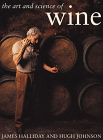 The art and science of wine The art and science of wine
James Halliday, Hugh Johnson
Mitchell Beazley, London, 1992 (ISBN 1 85732 422 6).
Reviews
wineanorak.com
This is a superb book! Written by two of the world's leading wine
writers, one English and one Australian, it provides a scholarly yet readable account of
how nature, art and science combine to make the wonderful diversity of wines there are in
the world today. Possibly the greatest strength of this book is its balance between the
old and the new, technology and tradition and respect for both art and science. Reading
this book is a great pleasure, partly because it is beautifully illustrated and laid out,
but also because it is well written and highly informative.
Buy this book from Amazon.co.uk
 Hugh Johnson's Story of Wine Hugh Johnson's Story of Wine
Hugh Johnson
Hardcover - 480 pages (
1 August, 1998)
Mitchell Beazley; ISBN: 1840001208
Synopsis
A history of wine which seeks to be "easily digestible" and unveils the cultural
perspective of wine. The book is written so as to be easy to read and can be dipped into
at random.
Buy this book from amazon.co.uk
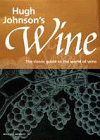 Wine Wine
Hugh Johnson
Hardcover - 254 pages (28 October, 1974)
Mitchell Beazley; ISBN: 0855330392
Buy this book from amazon.co.uk
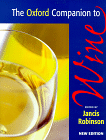 The Oxford Companion
to Wine The Oxford Companion
to Wine
Jancis Robinson (Editor)
Hardcover - 848 pages (21 October, 1999)
Oxford University Press; ISBN: 019866236X
Reviews
wineanorak.com
(Review of the first edition.) The ultimate wine
reference book. Editor Jancis Robinson has called on a large team of some of the most
knowledgable wine experts from around the globe to produce over 3000 alphabetically
arranged entries covering all manner of wine-related topics. These entries are nicely laid
out in a substantial (and weighty) book, which is nicely illustrated by a mixture of
line drawings, black and white photographs and a few colour plates. Comprehensive and
scholarly, yet at the same time readable enough for leisurely browsing. This is a
compulsory purchase for anyone who has a serious interest in wine. The big question for
those who own a copy of the first edition is whether it is worth splashing out on the
newly released second edition, which has been substantially revised
Amazon.co.uk
Wine head girl Jancis Robinson publishes a new edition of her acclaimed Oxford
Companion to Wine, coming as close as anybody is likely to in achieving the
unachievable goal of a detailed, comprehensive, single-volume work of reference covering
the whole world of wines. Just how daunting the task of keeping up with the now
practically supersonic pace of development in many areas of the wine industry must be is
indicated by the need, only five years after the first edition, to issue another with
updated versions of about half the 3,000 entries. It is an awesome achievement. Wine is
now a modern, global industry: Jancis Robinson and her team of contributors require--and
deliver--expertise in a really astonishing range of disciplines.
Practically every field of human knowledge seems to have something
to contribute. From geology and soil chemistry, through forestry and the nature of the
different woods used for barrels and the harvesting of cork bark, to the cultivation of
the vine, its training and pruning, and the techniques of fermentation; the list extends
even into areas of cutting-edge science such as DNA fingerprinting (which finally in 1997
unravelled the mystery of the parentage of the Cabernet Sauvignon grape--no, wild horses
wouldn't drag it from me, you'll have to buy the book). This is not to mention the
thorough coverage of wine regions and grape varieties, the role of wine through history
and its presence in art, the glossary entries. One could go on and on. This is a
stupendous feat of organisation. More than that, it is throughout well written and lively,
and in possession of a healthy quantity of attitude. --Robin Davidson
Go to the
amazon.co.uk catalogue entry for this book
 Jancis Robinson's
Guide to Wine Grapes Jancis Robinson's
Guide to Wine Grapes
Jancis Robinson
Paperback - 234 pages (14 October, 1996)
Oxford University Press; ISBN: 0198662327
Synopsis
Grape names and characteristics have never been so important for wine producers and
consumers. An increasing proportion of wines are labelled with the names of the grape
variety or varieties that go into them. They can provide vital clues for the wine drinker
to the likely flavour and characteristics of the liquid inside the bottle. A handful of
varieties - Chardonnay, Cabernet Sauvignon, Pinot Noir, Sauvignon Blanc and so on - are
grown in almost every wine region so that understanding them provides a fast track to
understanding a significant proportion of all wine produced in the world today. But
producers and consumers are tiring of this domination so that the range of grapes
trumpeted on labels is broadening. This book, with more than 800 grape names listed and
hundreds of different varieties described, provides a guide to an increasingly important
aspect of wine appreciation.
Buy this
book from amazon.co.uk
 Collins Gem Wine Dictionary Collins Gem Wine Dictionary
David Rowe
Paperback - 384 pages ( 1 March, 1999)
HarperCollins General Reference; ISBN: 0004722027
Synopsis
This text features explanations of over 1800 wine terms ranging from grape varieties and
wine-production techniques to tasting jargon. It explains the vocabulary and the special
contexts used by wine writers, and includes definitions on terms found on labels.
Buy this book from amazon.co.uk
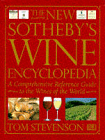 The New Sotheby's Wine
Encyclopedia The New Sotheby's Wine
Encyclopedia
Tom Stevenson
Hardcover - 600 pages (9 October, 1997)
Dorling Kindersley; ISBN: 0751303135
Reviews
Amazon.co.uk
Tom Stevenson's new edition of his Sotheby's Wine Encyclopedia is a formidable
achievement. Five years in the preparation (Stevenson had planned for three but found
himself overwhelmed by the incredible changes a decade had brought to the world of wine),
it is a real master work, putting Stevenson up there among the gurus--Jancis Robinson, Oz
Clarke, Hugh Johnson. Genuinely encyclopedic in scope and organisation, this is a
publication that delivers what it promises: comprehensive information about all aspects of
wine, in a beautifully clear structure and layout. It's wonderfully illustrated, too, with
many evocative pictures of vineyards and wineries around the world.
As so often with the current crop of all-encompassing blockbuster
wine books, the reader is likely to end up bemused by the sheer quantity of information,
and the range of disciplines, that the modern wine writer must master. Not so very long
ago a few elegant cellar and tasting notes might suffice. These days, the wine writer's
skills must encompass geology, geography and soil chemistry; the myriad grape varieties
and the best way to train, prune and harvest each of them in different climates; the
qualities of the different types of oak used for barrels--French against American against
Russian. And that's all before you even start making the wine, let alone tasting it. Tom
Stevenson has all this at his fingertips. As a reliable guide for the novice, and an
unfailingly informative companion for the connoisseur, The New Sotheby's Wine Encyclopedia
will be hard to beat. --Robin Davidson
Synopsis
Using maps, photographs and charts of individual wines, this encyclopaedia guides the
reader around the complex world of wine production whilst advising on the best wines and
vintages. New information includes a "Best Wines" chart and a section on
recognizing faults in wine.
Buy this book from amazon.co.uk
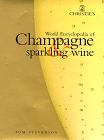 World Encyclopedia of
Champagne and Sparkling Wine World Encyclopedia of
Champagne and Sparkling Wine
Tom Stevenson
Hardcover - 336 pages (22 October, 1998)
Absolute Press; ISBN: 1899791981
Reviews
Amazon.co.uk
You have to have a real fizz fetish to buy this for yourself, but it's a great present for
someone who has more than just a passing interest in posh sparkling wine and who owns a
large, glamorous coffee table.
That's not to say that all the wines featured are posh, but it would be too sadistic to
put a review of Laurent-Perrier's Cuvée Grand Siècle 1952 (or the more readily available
1990) in front of a Champagne fan who couldn't afford to buy a bottle. Tom Stevenson has
very forceful opinions and great technical tasting abilities. His beautifully put together
reference book has been exhaustively researched and his knowledge of people, places and
wines that feature here is second-to- none. If there's a criticism, it would be that the
book lacks heart.
The author has had more expertise in sparkling wines than any other style--his
specialist subject would deny Magnus Magnuson of any "passes". His book, Champagne,
was a milestone on the topic and won him just one of his current holding of 22 literary
awards. The book has been produced in association with Christies, for whom he gives an
annual Champagne Master Class. Buy the book and a few bottles of the most highly
recommended sparklers; invite a few friends 'round; forget the Master Class.
Synopsis
An encyclopedia covering the sparkling wines of the world.
The author, Tom Stevenson , 13 January, 1999
I loved Amazon's inhouse review, despite the comment about the book lacking heart
(obviously I don't agree, but it would be churlish to complain after all the other praise
and, what the heck, I believe in freedom of speech anyway!). When compiling an
encyclopedia, an author is obliged to go into detail about every aspect of the subject.
Furthermore, an encyclopedia about Champagne and sparkling wine must include all the
producers, not just the best. If you're looking for the most comprehensive reference on
the subject, look no further, but if you want a buyer's guide, the The Millennium
Champagne & Sparkling Wine Guide is the book for you. Hopefully there will be a lot of
people out there who have a need for both. While I'm at it, I might as well say that this
is the book that proves "the English invented Champagne". It's not a new story.
I mentioned it in CHAMPAGNE (Sotheby's Publications) 12 years ago, but it is the first
time that the document proving the point has been published, which is why this became the
first wine book to warrant a leader in the Guardian. While this upset Le Figaro, which
accused me of trying to burn Dom Pérignon (not the most level-headed, rational argument
to try and shoot me down with), the French were the first to award my book a prize - Best
Wine Book of 1998 at the Salon International du Livre Gourmand in Périgueux - which I
thought was very magnanimous of them.
Buy this book from amazon.co.uk
|

 The World Atlas of Wine
The World Atlas of Wine Wine Atlas of
Australia and New Zealand
Wine Atlas of
Australia and New Zealand
 The art and science of wine
The art and science of wine Hugh Johnson's Story of Wine
Hugh Johnson's Story of Wine Wine
Wine The Oxford Companion
to Wine
The Oxford Companion
to Wine Jancis Robinson's
Guide to Wine Grapes
Jancis Robinson's
Guide to Wine Grapes Collins Gem Wine Dictionary
Collins Gem Wine Dictionary The New Sotheby's Wine
Encyclopedia
The New Sotheby's Wine
Encyclopedia World Encyclopedia of
Champagne and Sparkling Wine
World Encyclopedia of
Champagne and Sparkling Wine